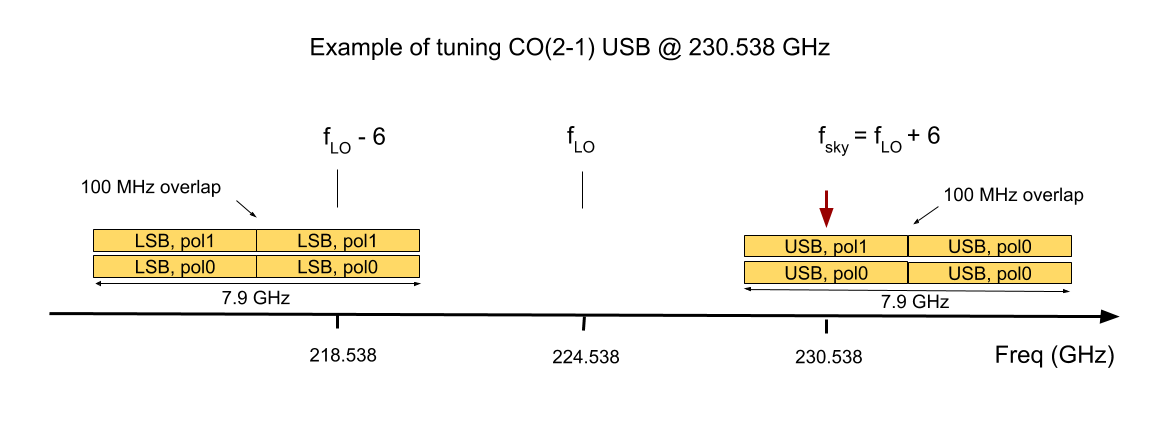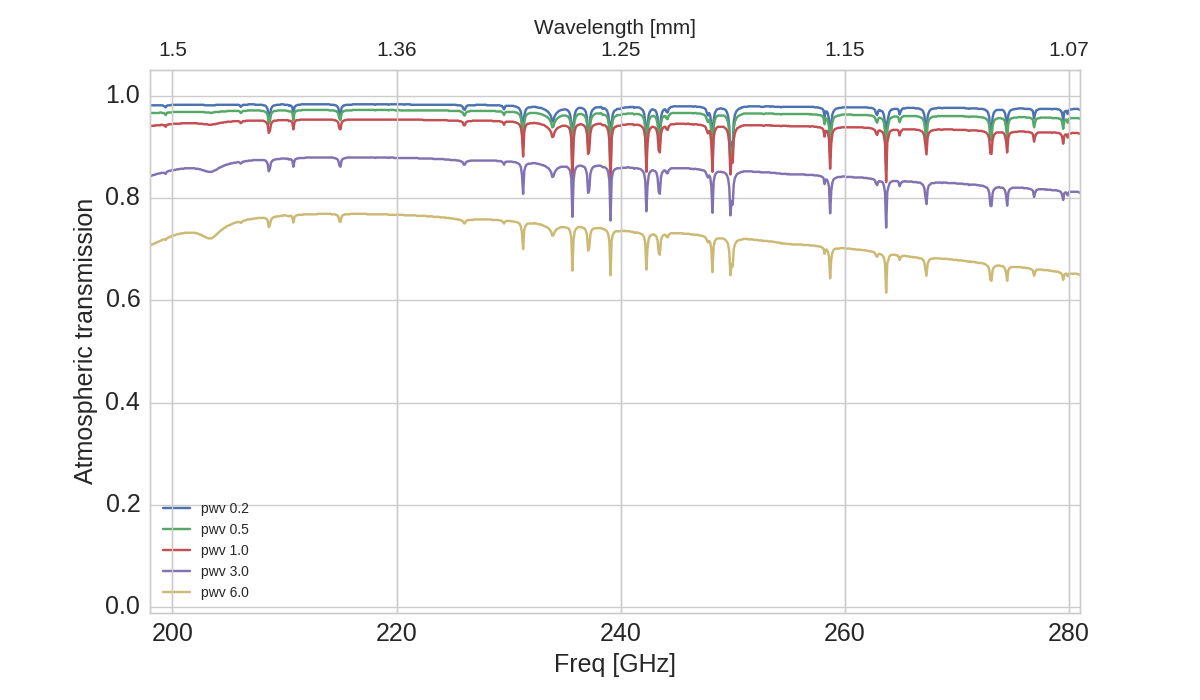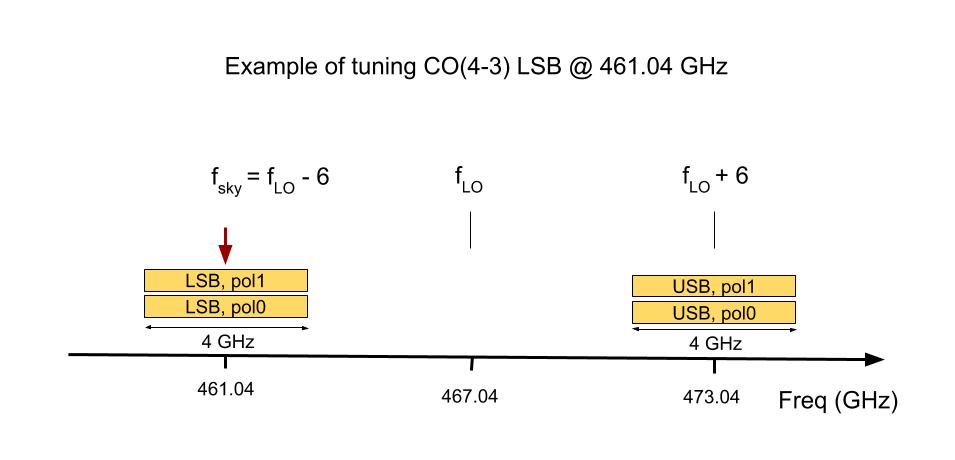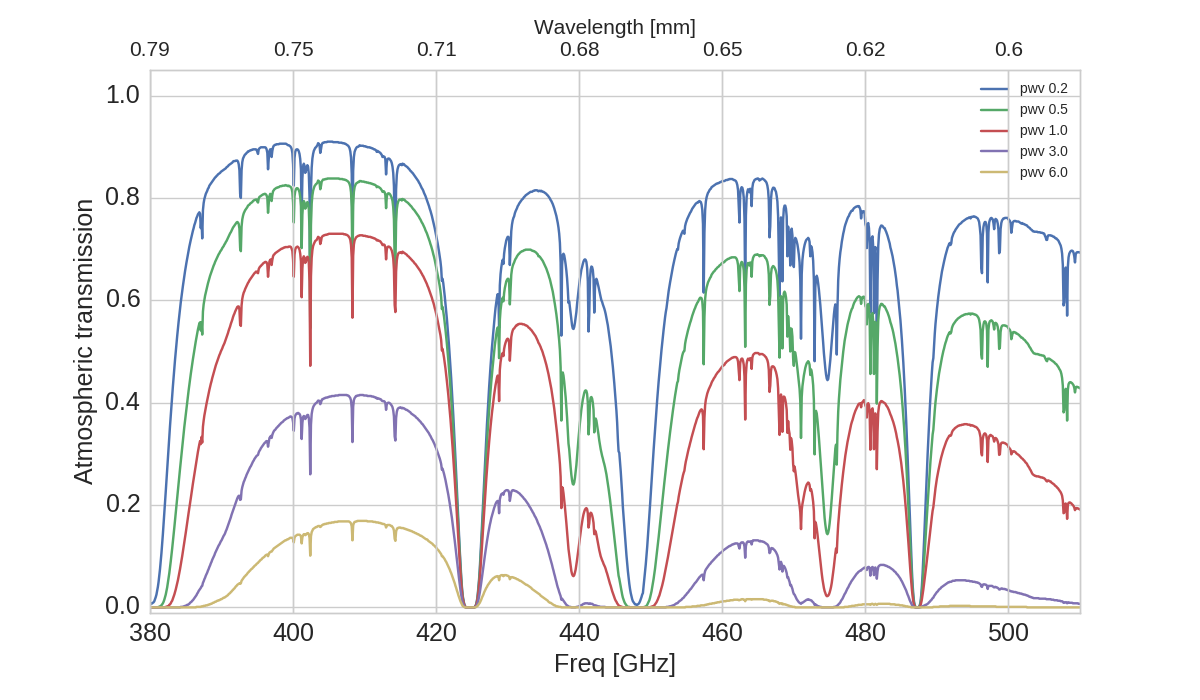The nFLASH receiver was delivered in 2020 by the MPIfR Sub-mm technology division in Bonn. It has two independently tunable frequency channels: nFLASH230 and nFLASH460. Both channels are dual polarisation (2 SIS mixers per channel) and dual sideband (2SB) meaning 4 SIS junctions in total.
The instrument is designed to work as a dual colour receiver to allow simultaneously observing in both 230 and 460 channels. However, this feature is not yet available.
nFLASH230 band
The nFLASH230 channel can be used for science observations in the frequency window between 196 and 281 GHz.
This channel has an extended IF coverage, comprising from 4 to 12 GHz, and therefore it covers up a total of 32 GHz IF instantaneous bandwidth including both sidebands and polarisations. The separation between the centre of the two sidebands is 16 GHz.

Each sideband (and polarisation) is recorded by two spectrometer processors units (FFTS), each of them recording 4 GHz, in the following configuration:
Therefore, both units overlap in the middle for about 100 MHz and the full coverage is slightly smaller than 8 GHz (7.9 GHz).
Line setups are designed to avoid placing the astronomical interesting line in the overlap region where aliasing effects are present. This is why the tuning sky frequency is placed in the middle part of one of the FFTS units, at 6 GHz from the LO frequency. In this configuration (shown in the figure above) the spectral coverage is not symmetric around the tuning frequency, and this needs to be considered when aiming for other transitions inside the band or when performing line surveys.
The typical receiver temperature is 80-90 K, increasing up to 100-120 K at the extremes of the frequency window (<210 GHz or >260 GHz LO frequencies). The sideband rejection is typically around 15 dB.
In the next figure one can see the atmospheric transmission for the nFLASH230 operation window.

The transmission over the Chajnantor plateau in this window is better than 70-80% even in the worse weather conditions (pwv of 5 mm) and there are no particularly strong absorption features by atmospheric species. Therefore this instrument can (and should) be used during the less favourable weather slots.
nfLASH460 band
The nFLASH460 covers the frequency window between 378 and 508 GHz. It has 4-8 GHz output IF bandwidth, so half the bandwidth that is covered by the nFLASH230 channel.

The separation between the center of the two sidebands is 12 GHz and each sideband (and polarisation) is covered by one FFTS spectrometer unit of 4 GHz bandwidth.
The receiver temperatures are typically below 150 K, except at the high frequency end of the spectral window (LO frequency > 480 GHz) where this increases to higher values. Sideband rejection is typically better than 15 dB all over the band.
As seen in the next figure, the atmospheric transmission over the nFLASH460 band is quite diverse, with the strongest absorption features being the 380-GHz water line (at the lower edge of the window), the 425-GHz and 487-GHz oxygen lines, and the water vapour line at 448 GHz.

Observing with nFLASH
nFLASH is an APEX facility receiver open to any PI through all the APEX partner queues.